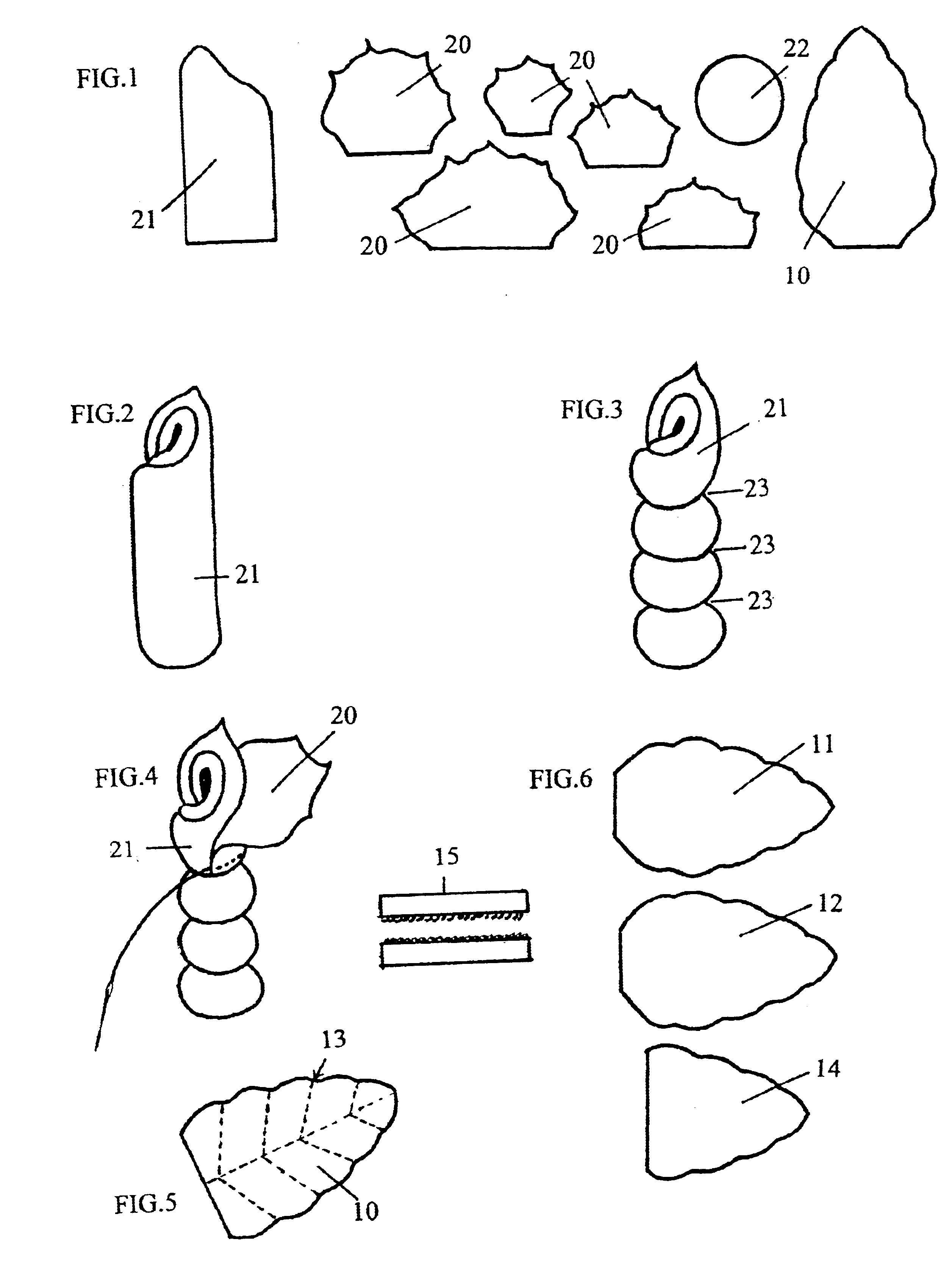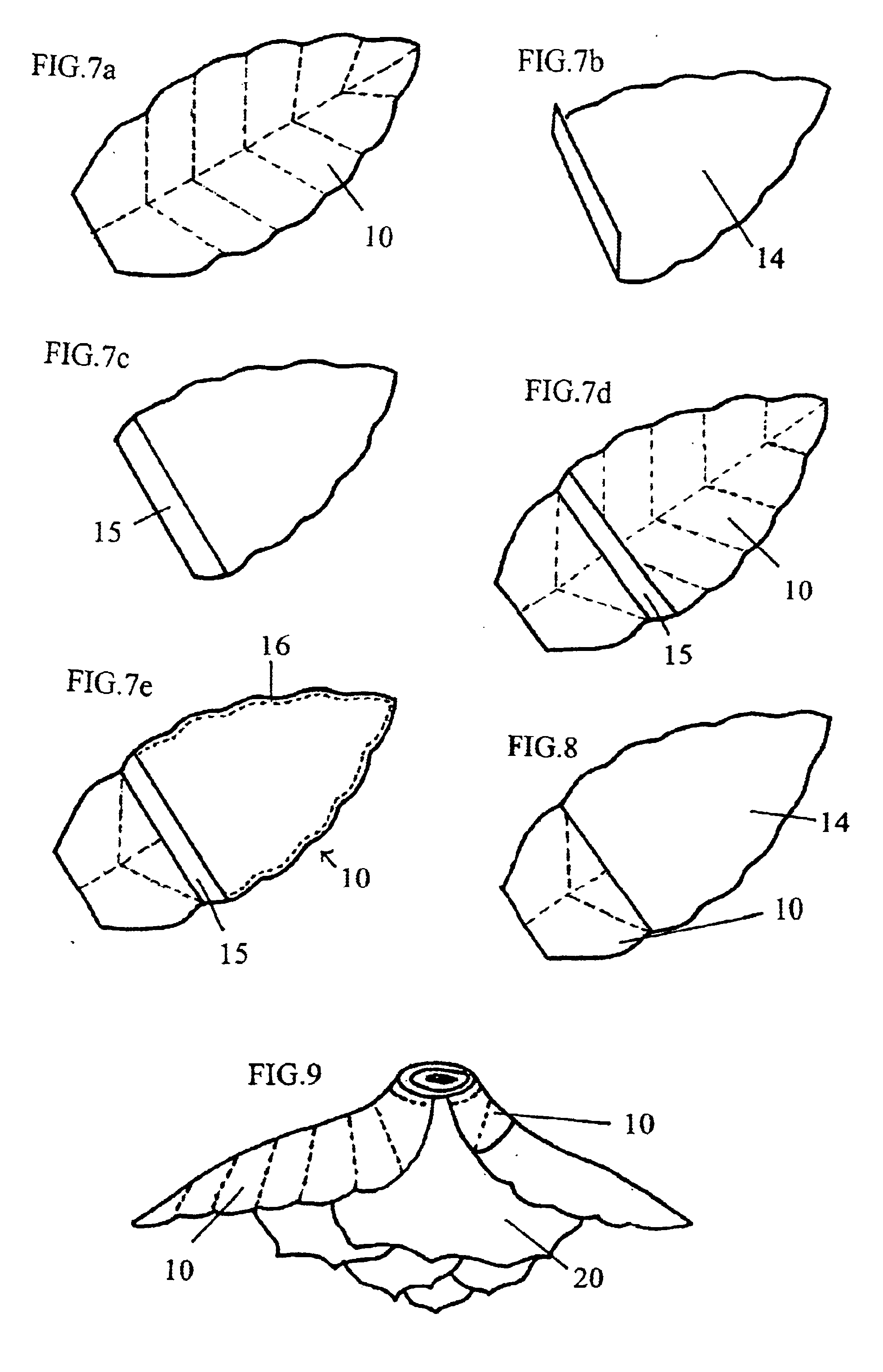Method of making a three-dimensional flower pillow/cushion
- Summary
- Abstract
- Description
- Claims
- Application Information
AI Technical Summary
Benefits of technology
Problems solved by technology
Method used
Image
Examples
Embodiment Construction
Each Perennial Pillow is fashioned in the shape of the pillow it represents. The method of fabrication begins by cutting and sewing each piece separately and putting them together one piece at a time. The center is fashioned first. The petals and leaves are arranged according to those of the flower being imitated. They are then attached to the center. A bottom is added to each pillow for a neat finish.
After being cut out, the petals are sewn one at a time leaving an opening for stuffing. They are then stuffed with a stuffing material such as, but not limited to polyfil, and sewn up. The petals are attached to the center to form the pillow.
The leaves are sewn, stuffed and turned. Next, the veins are sewn in. A pouch is added to one leaf. This is done by marking the leaf where a fastening means such as, but not limited to, a commercially and readily available hook and loop type will be attached.
The fastening means is attached to the leaf and to the pouch section. The pouch is sewn on ...
PUM
 Login to View More
Login to View More Abstract
Description
Claims
Application Information
 Login to View More
Login to View More - R&D
- Intellectual Property
- Life Sciences
- Materials
- Tech Scout
- Unparalleled Data Quality
- Higher Quality Content
- 60% Fewer Hallucinations
Browse by: Latest US Patents, China's latest patents, Technical Efficacy Thesaurus, Application Domain, Technology Topic, Popular Technical Reports.
© 2025 PatSnap. All rights reserved.Legal|Privacy policy|Modern Slavery Act Transparency Statement|Sitemap|About US| Contact US: help@patsnap.com



